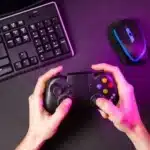Entering the world of music is a thrilling experience, filled with creativity and self-expression. However, choosing the right equipment as a beginner can be confusing, given the ever-evolving technology and vast options available in 2025. From traditional instruments like guitars and pianos to modern digital tools like MIDI controllers and audio interfaces, selecting the right gear can make a huge difference in your learning curve. Having the right equipment not only makes practice more enjoyable but also helps you develop a better understanding of sound, technique, and music production.
When starting, it’s essential to invest in beginner-friendly equipment that suits your musical goals and budget. Acoustic and digital pianos, entry-level guitars, and electronic drum kits are excellent choices for those looking to learn an instrument. Meanwhile, aspiring music producers can begin with a laptop, a digital audio workstation (DAW), and quality headphones. By carefully selecting the right tools, beginners can build a solid foundation for their musical journey while avoiding unnecessary frustration and expenses. With the right gear, 2025 is the perfect time to embark on your musical adventure and unlock your creative potential.
Essential Music Equipment for Beginners
Choosing the right music equipment for a beginner is essential for developing skills and making learning enjoyable. Whether you’re interested in playing an instrument or exploring digital music production, having beginner-friendly gear can help you progress effectively. Acoustic guitars and digital pianos are great starting points for those looking to play melodies, while electronic drum kits provide an accessible way to practice rhythms without disturbing others. If you’re interested in singing, a good-quality microphone and a basic audio interface can enhance your vocal recordings. Investing in reliable equipment ensures that you get the best sound quality while learning the fundamentals of music.
For aspiring music producers, a well-equipped home studio setup can make a significant difference in creativity and workflow. A laptop with a digital audio workstation (DAW) like FL Studio, Ableton Live, or GarageBand is a must-have. Additionally, a MIDI controller can help you compose and play virtual instruments with ease. Studio headphones and monitors are crucial for accurate sound production, allowing beginners to develop an ear for mixing and mastering. With the right setup, beginners can start creating and experimenting with music, even without formal training.
Accessories and additional gear can also improve your overall music-learning experience. A sturdy guitar stand, a reliable metronome, and quality instrument cables can enhance convenience and performance. If you’re learning drums, drumsticks and practice pads are essential tools for improving technique. Keyboard players may benefit from sustained pedals and adjustable stands to create a comfortable playing experience. By carefully selecting essential music equipment based on your goals and budget, you can build a solid foundation for your musical journey and enjoy the process of learning and creating music in 2025.
| Music Equipment | Purpose | Best For | Price Range |
| Electric Guitar | Great for rock, pop, and modern styles | Guitarists | $100 – $800 |
| Acoustic Guitar | Suitable for folk, country, and classical styles | Beginners and pros alike | $100 – $1500 |
| Piano (Digital or Acoustic) | A staple for all music genres | Pianists | $150 – $4000 |
| Drum Kit (Acoustic or Electronic) | Drums are essential for rhythm sections | Drummers | $200 – $3000 |
| DJ Controller | Perfect for aspiring DJs and electronic artists | DJs and producers | $100 – $1000 |
Types of Musical Instruments to Consider for Beginners
Choosing the right instrument as a beginner depends on your musical interests, budget, and learning preferences. Some instruments are easier to start with, while others provide a strong foundation for understanding music. Whether you want to play solo or be part of a band, selecting an instrument that suits your goals will make learning more enjoyable. Below are some popular choices for beginners and their unique benefits.
Choosing the Right Instrument as a Beginner
Starting your musical journey requires selecting an instrument that suits your interests and goals. Some instruments are easier to learn than others, while some require more practice and technical skills. Consider factors like sound preference, portability, budget, and the type of music you want to play. If you enjoy melody-based music, instruments like the piano, guitar, or ukulele might be ideal. For rhythm lovers, drums or percussion instruments can be a great option. If you want to experiment with sounds, a synthesizer or electronic music equipment may be the best fit.
Electric Guitars: The Go-To for Many Genres
Electric guitars are among the most popular instruments for beginners, especially those interested in rock, jazz, blues, or pop music. One of the biggest advantages of an electric guitar is its ability to produce various sounds through effects pedals and amplifier settings. Beginners can start with an entry-level model and gradually upgrade as they become more skilled. Electric guitars have thinner necks, making it easier to play chords and move fingers along the fretboard. Learning basic scales, power chords, and finger positioning can help beginners progress quickly.
Acoustic Guitars: The Classic Starter Instrument
Acoustic guitars are excellent for those who prefer a natural and unplugged sound. They don’t require additional equipment like amplifiers, making them budget-friendly and easy to carry around. Acoustic guitars are widely used in folk, country, classical, and even pop music. Learning on an acoustic guitar helps beginners develop strong finger strength and improves chord progression techniques. Beginners should choose a guitar with comfortable string action, ensuring ease of playability while practicing different strumming patterns and fingerpicking styles.
Pianos: A Great Foundation for Learning Music Theory
Pianos are one of the best instruments for beginners because they provide a strong foundation in music theory. The clear arrangement of keys makes it easier to understand notes, chords, scales, and harmonies. Beginners can choose between digital and acoustic pianos based on budget and space availability. Digital pianos come with various built-in sounds, recording functions, and learning modes, making them more interactive for new learners. Consistent practice with simple melodies and basic hand coordination techniques helps beginners gain confidence in playing.
Drums: Bringing Rhythm to Your Musical Journey
Drumming is perfect for those who enjoy rhythm-based music and want to develop strong coordination skills. Beginners can start with an acoustic drum kit or opt for an electronic drum set, which is quieter and more compact. Electronic drums are ideal for practice since they often come with built-in learning tools and sound variations. Drumming requires good timing, hand-foot coordination, and control over beats. By practicing simple rhythm patterns and gradually increasing speed, beginners can improve their drumming skills and explore different genres like rock, jazz, and funk.
Keyboards: An Affordable Alternative to Pianos
Keyboards are a great alternative for those who want to learn piano but have space or budget constraints. They are lightweight, portable, and often come with built-in sounds, rhythms, and digital effects. Many beginner-friendly keyboards have smaller keys, making it easier for young learners to play. Learning simple chords, scales, and basic melodies can help beginners progress quickly. Some keyboards also have interactive features like light-up keys, touch-sensitive controls, and connectivity with learning apps, which make the learning process more engaging.
Ukulele: A Fun and Easy String Instrument
The ukulele is an excellent choice for beginners due to its small size, simple chord structures, and soft nylon strings that are gentle on the fingers. It has a cheerful and bright sound, making it perfect for pop, folk, and Hawaiian music. Unlike guitars, the ukulele has only four strings, making it easier to learn basic chords and strumming patterns. Beginners can start by practicing simple songs with three or four chords, gradually expanding their skills with fingerpicking techniques and rhythm variations.
Violin: A Beautiful but Challenging Instrument
The violin is a classical instrument that requires patience and precision to master. It produces a rich and expressive sound, making it a popular choice in orchestras and solo performances. Beginners must focus on posture, bowing techniques, and finger placement to develop good intonation and control. Although the violin is more challenging to learn than some other instruments, consistent practice can lead to rewarding results. Starting with simple scales and melodies helps new learners build their skills gradually.
Bass Guitar: The Backbone of a Band
The bass guitar plays a crucial role in music by providing rhythm and depth to a band’s sound. It has fewer strings than a regular guitar, making it slightly easier for beginners to learn. Unlike lead guitar, bass focuses on timing, groove, and consistency in playing notes. Beginners should start by learning basic bass lines, scales, and rhythmic patterns to develop a solid foundation. Playing along with drum beats and metronomes can help improve timing and synchronization.
Harmonica: A Portable and Fun Instrument
The harmonica is a small yet powerful instrument that is easy to learn and carry anywhere. It is widely used in blues, folk, and country music, providing a soulful and expressive sound. Beginners can start with a diatonic harmonica, which has a simple note arrangement for playing basic tunes. Learning proper breathing techniques and note-bending skills can help create dynamic and rich melodies. Since the harmonica doesn’t require complex finger movements, it’s an excellent choice for those who want a quick and enjoyable way to play music.
Saxophone: A Smooth and Expressive Choice
The saxophone is ideal for beginners who love jazz, blues, or rock music. It requires good breath control and finger dexterity to produce smooth and flowing melodies. Beginners should start with an alto saxophone, which is smaller and easier to handle. Learning basic scales, note transitions, and articulation techniques can help new players improve their performance. With practice, the saxophone allows for expressive and soulful playing, making it a popular choice for solo and ensemble performances.
Percussion Instruments: A Simple Way to Start with Rhythm
For beginners interested in rhythm but not ready for a full drum kit, percussion instruments like bongos, cajón, or djembe are great alternatives. These instruments help develop a sense of timing and coordination. Bongos and djembe are played using hand techniques, while cajón provides a drum-like sound with a wooden box structure. Practicing simple rhythm patterns and hand drumming techniques can help beginners gain confidence in playing percussion.
Synthesizers: Perfect for Electronic Music Lovers
Synthesizers are great for beginners interested in creating electronic music. They allow players to explore different sound effects, beats, and melodies. Many modern synthesizers come with built-in tutorials and preset sounds that make it easier to experiment with different musical styles. Beginners can start with basic note sequencing and sound modulation, gradually learning to customize tones and rhythms. Synthesizers are widely used in pop, EDM, and experimental music genres.
Recorder: A Beginner-Friendly Woodwind Instrument
The recorder is one of the easiest woodwind instruments to learn, making it a common choice in schools. It helps beginners develop breath control, finger coordination, and basic note-reading skills. The recorder’s simple design allows for quick learning of melodies and scales. By practicing breath techniques and note transitions, beginners can create smooth and tuneful performances. It serves as a good foundation for those who wish to transition to more complex wind instruments like the flute or clarinet.
Mandolin: A Unique and Melodic String Instrument
The mandolin is a small, eight-stringed instrument that produces a bright and melodious sound. It is commonly used in folk, bluegrass, and classical music. The mandolin’s compact size makes it easy to handle, and its tuning is similar to a violin, making it an interesting choice for beginners who enjoy stringed instruments. Learning simple chords, strumming patterns, and fingerpicking techniques can help new players get comfortable with the mandolin’s distinct sound.
Essential Accessories for Music Beginners
When starting your musical journey, having the right accessories is just as important as choosing your instrument. These accessories enhance your playing experience, improve your sound quality, and help you maintain your equipment properly. Here are ten essential accessories every beginner musician should consider:
- High-Quality Headphones: Investing in good headphones is essential, especially if you’re practicing in shared spaces or working with digital music production. Closed-back headphones provide excellent noise isolation, allowing you to hear every detail of your sound without distractions. Open-back headphones, on the other hand, offer a more natural and expansive audio experience.
- Adjustable Music Stand: A sturdy music stand helps you keep your sheet music, practice notes, or song lyrics easily accessible. This accessory is particularly useful for those learning to read music, as it helps maintain good posture and focus during practice. Opt for an adjustable stand that suits different heights and playing styles.
- Instrument-Specific Cables and Adapters: For electric instruments like guitars, keyboards, or synthesizers, high-quality cables are a must-have. Poor-quality cables can lead to signal loss, interference, and sound distortion. Ensure you have backup cables and necessary adapters for seamless connectivity to amplifiers, audio interfaces, or PA systems.
- Digital Tuners for Precise Tuning: Staying in tune is essential for any musician. Clip-on tuners work well for string instruments like guitars, bass, and ukuleles, while pedal tuners are great for live performances. Some apps also function as tuners, but a dedicated tuner provides greater accuracy and reliability.
- Metronome for Perfect Timing: A metronome helps musicians develop a strong sense of rhythm and maintain a consistent tempo while practicing. Digital metronomes offer a variety of tempo settings, while traditional mechanical metronomes provide a classic visual cue. Many metronomes also come with built-in rhythm patterns to make practice sessions more engaging.
- Comfortable Instrument Strap: If you play a guitar, bass, or another strap-compatible instrument, investing in a comfortable and adjustable strap is important. A well-padded strap reduces strain on your shoulders and back, making long practice sessions or performances much more comfortable. Look for straps with secure locking mechanisms to prevent accidental drops.
- Instrument Cleaning and Maintenance Kit: Regular maintenance ensures your instrument stays in top condition. A cleaning kit typically includes microfiber cloths, polish, string lubricants, and brushes to remove dust, dirt, and sweat. Proper maintenance prevents damage, prolongs the lifespan of your instrument, and keeps it looking and sounding its best.
- Extra Set of Strings or Drumsticks: Strings and drumsticks wear out over time, so having spares on hand is crucial. For guitar and violin players, a fresh set of strings enhances tone and playability. Drummers should keep an extra pair of sticks in case they break during practice or performances. Always choose strings and sticks that match your playing style.
- Durable Instrument Case or Gig Bag: A hard case provides the best protection against impacts, while soft gig bags are lightweight and easy to carry. If you travel frequently with your instrument, opt for a case with waterproof and shock-resistant materials to prevent damage. Proper storage also protects your instrument from dust, humidity, and temperature changes.
- Audio Interface for Digital RRecording If you plan to record music or explore digital production, an audio interface is essential. It connects your instrument or microphone to a computer, allowing you to record high-quality audio. Many entry-level audio interfaces offer USB connectivity, built-in preamps, and easy-to-use software for beginners.
Final Thoughts
Having the right accessories can significantly improve your learning experience and make your musical journey more enjoyable. Whether it’s maintaining your instrument, enhancing sound quality, or making practice sessions more efficient, these ten essential accessories will help you build a strong foundation as a beginner musician.
How to Choose the Right Music Gear for You
Selecting the right music gear depends on your musical goals, skill level, and budget. Beginners should start with user-friendly instruments that match their preferred genre. For example, acoustic guitars are great for singer-songwriters, while electric guitars work well for rock and blues enthusiasts. Digital pianos are excellent for those wanting to learn music theory, while electronic drum kits are ideal for practice without noise disturbances. Consider the size, weight, and additional equipment required, such as amplifiers, pedals, or stands.
Before making a purchase, research different brands, read reviews, and test the gear if possible. Set a budget and invest in quality equipment that offers durability and good sound. Starter bundles often provide great value, including essential accessories like tuners, picks, and cables. If you’re interested in digital music production, ensure your setup includes a MIDI keyboard, audio interface, and studio headphones. Choosing the right gear enhances your learning experience and keeps you motivated on your musical journey.
| Consideration | Electric Guitar | Acoustic Guitar | Piano | Drums |
| Portability | Moderate | High | Low | Moderate |
| Cost | $100 – $800 | $100 – $1500 | $150 – $4000 | $200 – $3000 |
| Learning Curve | Moderate | Low | Moderate | High |
| Space Requirements | Low | Low | High | Moderate to High |
| Genre Versatility | High | Moderate | High | Low |
Maintenance and Care of Your Music Gear
Taking good care of your music equipment is essential to ensure it lasts longer and performs at its best. For guitars, regularly cleaning the strings and fretboard is important to prevent the buildup of dirt and oils, which can affect the tone and playability. Acoustic guitars should be kept in a stable environment, away from moisture and extreme temperatures, to avoid warping or cracking. For electronic instruments like keyboards or synthesizers, cleaning the keys with a microfiber cloth and using compressed air to clear out any dust from vents can help maintain their functionality.
Drums, both acoustic and electronic, need regular attention too. Drumheads should be checked for wear, and pads should be inspected for any signs of damage. For all your music gear, it’s crucial to store instruments properly, using cases or stands to protect them from potential damage. Additionally, tuning your instruments regularly, especially for pianos and guitars, will ensure they remain in good condition and are always ready for performance or practice. Proper maintenance of cables and connectors is also important, as worn-out cables can cause signal loss and other technical issues.
Regularly Clean Your Instruments
Keeping your instruments clean after every use is essential for maintaining their appearance and functionality. Use a soft cloth to wipe off any dust, sweat, or grime. For guitars and pianos, it’s especially important to clean the strings, keys and surfaces regularly to prevent dirt from affecting sound quality. For drums, wiping the drumheads and shells can prevent debris buildup and maintain their luster.
Proper Storage to Avoid Damage
Always store your instruments in a safe environment to protect them from falling, warping, or becoming damaged. Instrument cases or padded gig bags are ideal for guitars and stands or wall mounts should be used for violins, woodwinds, or brass instruments. For pianos and keyboards, it’s recommended to keep them covered to prevent dust from accumulating.
Change Guitar Strings Regularly
Guitar strings lose their tension and tone over time. Replace your strings every few months or sooner if they begin to sound dull or break. Frequent players may need to replace their strings even more often to keep the instrument performing at its best.
Humidity Control for Wooden Instruments
Instruments like acoustic guitars, violins, and cellos are made from wood, which is highly sensitive to temperature and humidity fluctuations. Using a humidifier or dehumidifier in your storage area or your instrument case can prevent damage like cracking, warping, or loosening glue joints.
Piano and Keyboard Care
Keeping your piano or keyboard in top condition means ensuring it’s regularly cleaned. For acoustic pianos, professional tuning should be done annually or when needed. For digital pianos, make sure the software is regularly updated to ensure you’re getting the latest features and bug fixes. Clean the keys with a soft, lint-free cloth to avoid discoloration.
Tune Instruments Frequently
Keeping instruments in tune is crucial for optimal performance. Guitars, pianos, and violins need to be tuned regularly to maintain their sound quality. Use a digital tuner for accuracy and make adjustments as needed to keep your instruments sounding perfect. For pianos, getting them tuned by a professional every 6-12 months is essential.
Monitor and Replace Drumheads
Drumheads naturally wear out over time. Keep an eye on their condition and replace them when you notice dents, cracks, or fading sound quality. Regularly check the tension and replace the drumheads as necessary to ensure your drums produce clear, powerful tones. For electronic drums, regularly inspect the pads and cables for wear.
Protect Your Cables and Connectors
Cables are the backbone of your electronic gear—whether you’re using a guitar amp, synthesizer, or audio interface. Be sure to handle cables with care, avoid tripping over them, and store them neatly when not in use. Use cable ties to avoid tangling and prevent them from getting damaged, which can affect performance.
Clean Electronic Equipment Properly
Electronic gear like mixers, amplifiers, and synthesizers should be cleaned carefully to avoid dust and dirt buildup, which can lead to overheating and malfunction. Compressed air can be used to clean vents and ports, ensuring your gear stays cool during use. Wipe down surfaces with a microfiber cloth to maintain its aesthetic appeal.
Update Software and Firmware
For instruments that incorporate digital technology, like keyboards or drum machines, make sure to update the software or firmware to improve their functionality. Updates are regularly released by manufacturers to address issues, enhance functionality, and add new features. Regularly check for updates to ensure your gear is running smoothly.
Invest in an Instrument-Specific Cleaning Kit
Having a cleaning kit designed for your instrument is vital for preserving its longevity. For example, if you play a guitar, invest in a specialized kit for cleaning the body, strings, and fretboard. For brass or woodwind players, using a cleaning rod or brush will ensure the interior is kept free of dust and moisture buildup.
Avoid Extreme Temperatures
Temperature extremes can severely damage your instruments. Never leave your guitar, keyboard, or brass instrument in places like cars or garages, where the temperature can fluctuate dramatically. Ensure that your instruments are stored in temperature-controlled environments to protect the materials from cracking, warping, or rusting.
Wrapping Up
Starting with the right music equipment is essential for any beginner wanting to unlock their musical potential. Whether you’re taking your first steps with an instrument or diving into music production, having the proper gear can make the learning process more enjoyable and efficient. Choosing beginner-friendly instruments, accessories, and software will not only help you build confidence but also encourage you to develop the skills you need. The key is to invest in quality equipment that matches your musical interests, ensuring you’re motivated to continue learning.
As your musical journey progresses, don’t hesitate to experiment and upgrade your gear as your skills develop. Learning music is an ongoing adventure, and the right tools will open up new genres, techniques, and creative avenues to explore. With patience, perseverance, and the right gear, you can transform your love for music into a fulfilling and rewarding journey, throughout 2025 and beyond.
FAQs
What is the best musical instrument for beginners in 2025?
The best musical instrument for beginners depends on the genre and personal preference. Acoustic guitars and digital pianos are commonly recommended due to their ease of learning and versatility. However, it’s important to pick the instrument that aligns with the type of music you want to create.
How much should I expect to spend on music equipment as a beginner?
As a beginner, you can expect to spend anywhere from $100 to $1500 for a good quality instrument, depending on whether you choose an electric guitar, acoustic guitar, or piano. Drums and electronic music equipment can be on the higher end, especially with advanced features.
Do I need additional accessories with my music gear?
Yes, essential accessories such as headphones, music stands, tuners, metronomes, and cables are crucial to enhance your practice and ensure you get the most out of your equipment.
Can I learn music with an electric guitar as a beginner?
Yes, electric guitars are a great option for beginners. They allow for versatility in different genres, and you can always add effects and sounds as you advance.
What distinguishes beginner electric guitars from acoustic guitars?
Acoustic guitars don’t require additional equipment like amplifiers, making them simpler for beginners. Electric guitars, on the other hand, provide more versatility and sound manipulation, but you’ll need an amp to use them fully.
Is learning to play piano difficult for beginners?
Learning the piano can be challenging, but it is one of the best instruments for understanding music theory and developing musical skills. Digital pianos offer a variety of learning features for beginners to make the process easier.
Should I get a drum kit or learn another instrument?
Drums are perfect for those who enjoy rhythm and want to create a dynamic music experience. However, it requires more space and can be difficult to master. If you prefer melodies, instruments like the guitar or piano may be a better starting point.










